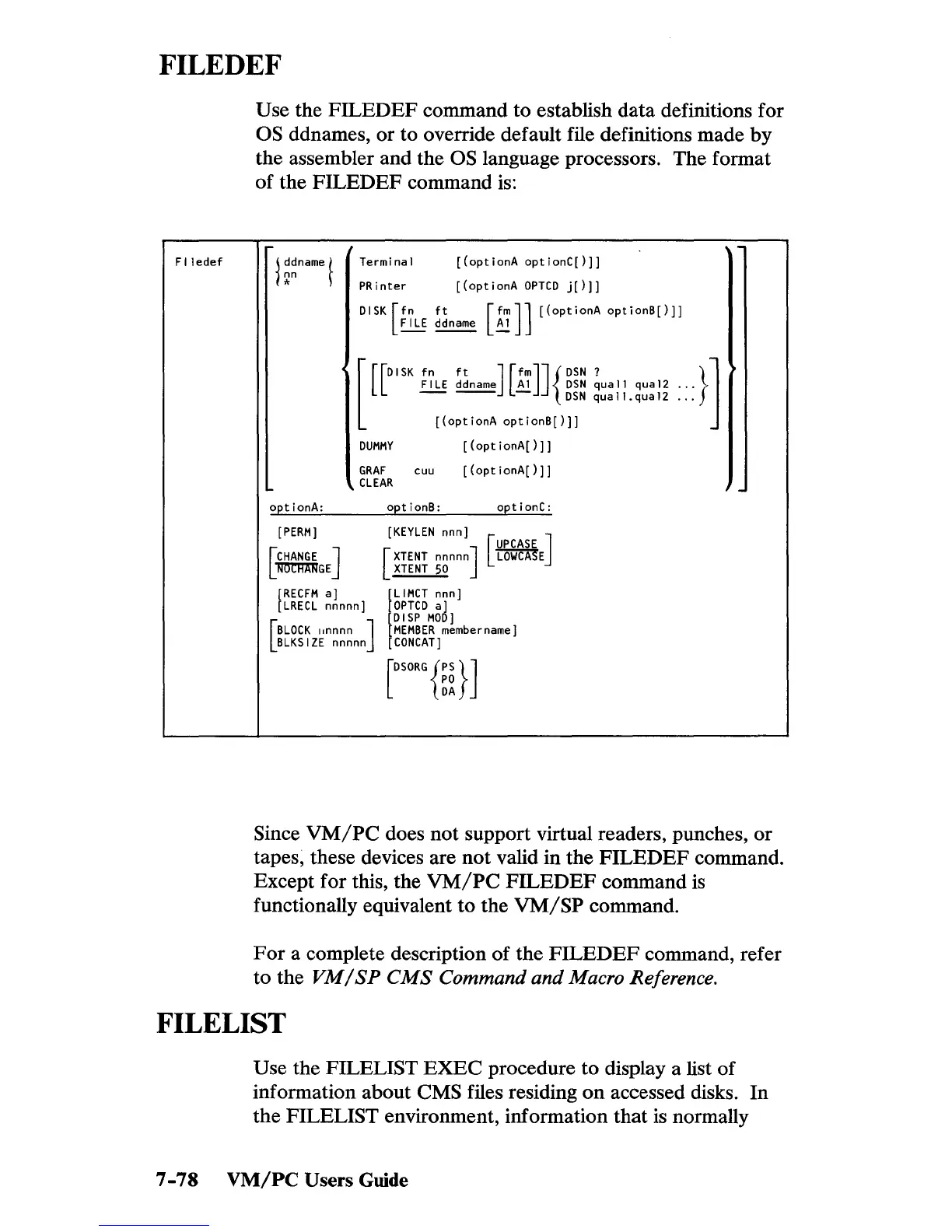FILEDEF
F
Iledef
Use the
FILEDEF
command to establish data definitions for
as ddnames, or to override default file definitions made
by
the assembler and the as language processors. The format
of
the
FILEDEF
command
is:
...
~
~~name
~
opt
i
onA:
[PERM]
[
CHANGE
]
lrntmrnGE
[RECFM
a]
Terminal
PR
inter
[(opt
ionA
opt
ione[}J]
[
(opt
i onA
OPTCD
j
[)
]]
DISK
[fn
ft
[fm]]
[(optionA
optionB[)]]
FILE
ddname
Al
---
-
[
[[DISK
~7LE
:~nameJ[~JJ{~~~
~uall
qual2
.•.
If]
DSN
quall.qua12
...
[(optionA
optionB[)]]
DUMMY
[(opt
ionA[)
II
GRAF
cuu
[(opt
ionA[)]]
,
CLEAR
opt
ionB:
optionC:
[KEYLEN
nnn]
[
UPCASE
]
[
XTENT
nnnnnJ
LOWCASE
~
[LRECL
nnnnn]
[LIMCT
nnn]
[OPTCD
a]
[D I
SP
MOD]
[
BLOCK
Ilnnnn
]
BLKS
I
ZE
nnnnn
[MEMBER
membername]
[CONCAT]
[DSORG
{H}
]
I -
-
Since
VM/PC
does not support virtual readers, punches,
or
tapes, these devices are
not
valid in the
FILEDEF
command.
Except for this, the
VM/PC
FILEDEF
command
is
functionally equivalent
to
the
VM/SP
command.
For
a complete description of the
FILEDEF
command, refer
to
the
VM/SP
CMS
Command and Macro Reference.
FILELIST
Use the FILELIST
EXEC
procedure to display a list
of
information about CMS files residing
on
accessed disks.
In
the
FILELIST environment, information
that
is normally
7
-78
VM/PC
Users Guide

